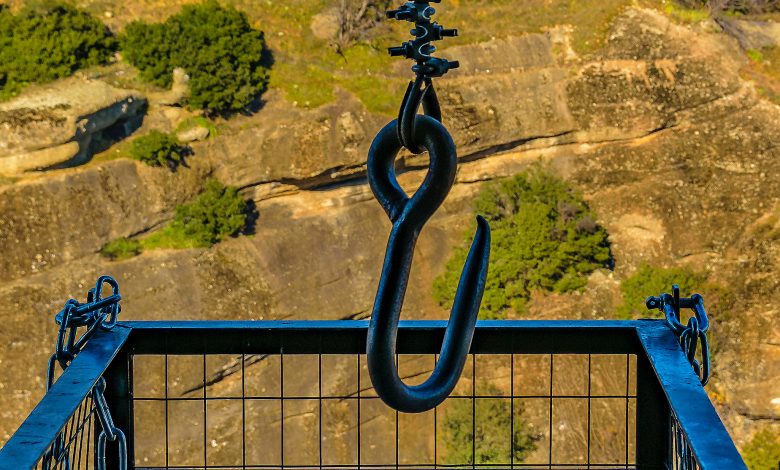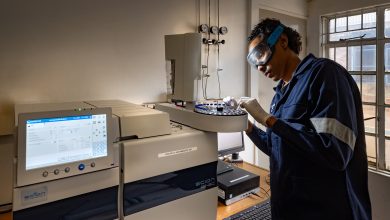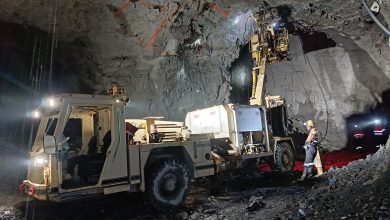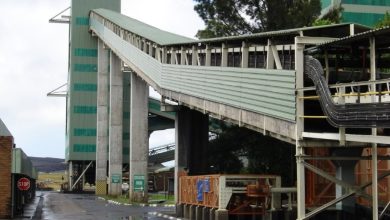
Benchmarks for wire rope lubrication help mines optimise equipment performance
Benchmarking standards for wire rope lubrication can have a significant effect on the performance, longevity and environmental impact of wire ropes. Lubrication Engineers (LE) South Africa has been working with clients across the country to test and monitor the performance of its Wirelife® Almasol® Coating Greases on ropes. The company is also developing standards to help wire rope operators benchmark the most effective lubrication solutions for different applications.
Through its recently formalised Xtend team – a group of lubrication technicians highly skilled in assessing, applying and monitoring lubrication systems for wire ropes – LE has established standards for extreme temperatures (particularly cold temperatures), coating standards and lubrication interval standards.
Ronald Byrnes, LE’s business development manager and head of the Xtend team, says the standards are helping operational teams at mines and other wire rope sites. Tests by LE have shown that the company’s products deliver lasting benefits in performance, durability, and environmental impact.
LE has developed the following standards to help clients benchmark wire rope lubrication performance:
- Ambient temperature standards: LE has created a checklist for clients operating in sub-zero temperatures, based on criteria the Xtend team developed through direct observation of ropes in these conditions. The aim is to help clients quickly identify and correct any lubrication breakdown.
“So far we have not had one occasion to apply a hold on any mine winder rope, even in sub-zero conditions,” says Byrnes. “We’re very fortunate to have the Wirelife® Almasol® Coating Grease 452 product in our arsenal of lubricants.”
- Coating standards: LE has also developed a coating standard for mine winder ropes. This considers the rope’s speed, length and diameter in each application to determine the amount of lubricant needed for effective servicing. “We now have a formidable formula to determine how much lubricant is required to lubricate a specific rope, set of ropes, or quadrant of ropes,” says Byrnes.
- Standards for lubrication intervals: LE has identified optimal lubrication intervals to minimise rope wear and extend service life, informed by testing downgraded rope with crown wire breaks (damage to the outer wires). When LE’s Wirelife® Almasol® Coating Grease was applied, the rope’s discard factor of 0.6 stabilised, and no new crown breaks were recorded over four months.
This is due to the coating grease’s ability to prevent fretting corrosion (when wires scuff or grind against one another, leading to cracks and eventual failure). “It’s pleasing that we can enhance the safe, useful service life of mine winder ropes when we set the standard for intervals of lubrication,” says Byrnes.
The optimal lubrication schedule identified by LE is:
- Lubricate a new rope within four weeks of installation.
- Apply a second lubrication intervention four months later.
- Carry out subsequent interventions every six months thereafter.
To establish these standards, LE also monitored various wire ropes through monthly visual inspections and monthly non-destructive testing (NDT), conducted by independent testers appointed by the Department of Minerals, Petroleum and Energy.
Environmental benefits
While the standards are beneficial to LE, they are also intended to be tools for wire rope operators to determine for themselves how a lubrication product is performing, says Byrnes.
In terms of the application methods and the lubricants LE supplies, Byrnes says they do not require heating, or preheating, which a bituminous lubricant or rope dressing does. “This means there is a significant impact, not only through a lower carbon footprint, but also in terms of environmental impact because there’s less wastage and mess. Not needing to preheat a lubricant also means mines are no longer working with a molten lubricant that can be very dangerous.”
Xtend team services
Standards developed in local market conditions are invaluable for wire rope operators, and LE hopes to continue expanding its Xtend team to support clients in monitoring and maintaining their wire ropes.
Byrnes says the Xtend team will soon be able to offer South African mines a tool that will not only measure the present Rope Condition Assessment (NDT) and provide real-time information, but also formalise rope performance and lubrication regimes, and project future rope useful and safe service life.
This directly supports the concepts of rope maintenance and, importantly, rope preservation – a critical outcome not previously available to South African underground mines.






